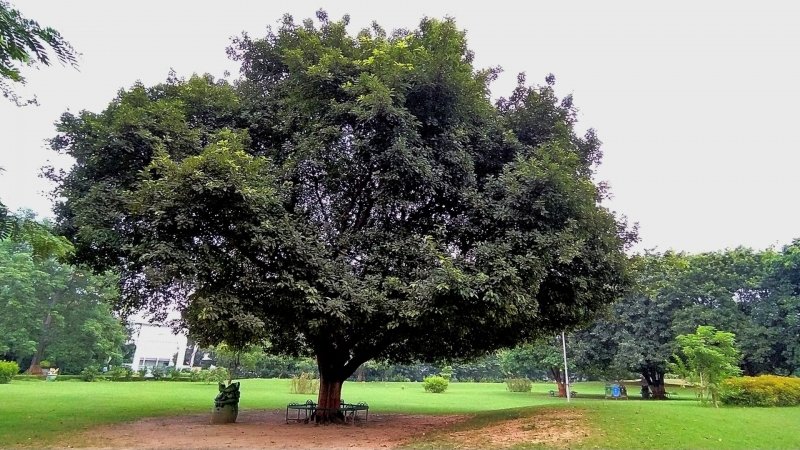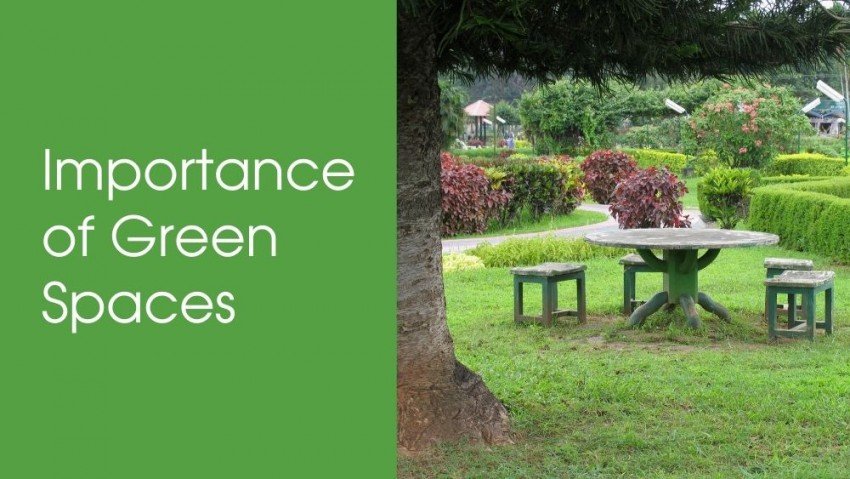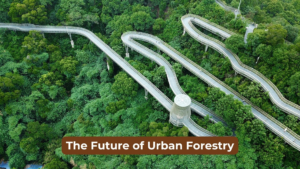Mental stress, emotional health are now priority discussions since we faced the pandemic caused by COVID-19. On the harshest sides, gender violence and calls for divorces have been increasing in some parts of the country as well as the world. The bonding of economic slowdown and resulting lay-offs are some of the causes.
Various studies have shown that urban green spaces help people reduce stress, and improve brain functioning, thus improving mental health. Urban green spaces in cities are important for promoting good physical and mental health.
Health benefits of greening cities are longer life expectancy, fewer mental health problems, and better cognitive functioning.
In India, during the pandemic, almost everything was locked down and people were prohibited from visiting green spaces, reducing people’s resilience. And unfortunately, with the increasing urbanization, we anyway see too few green spaces such as parks, forests, and trees on the roads. The World Health Organization suggests that everyone should have a green space of at least 0.5 hectares within 300 meters of their house (WHO 2016), but many people don’t, particularly in poorer areas in India.
Greening cities come with various health benefits like better mood and healthier babies. It also reduces air pollution, heat, and noise levels. Even CO2 levels are reduced helping us fight against the climate crisis. Green spaces improve our ecosystems and increase biodiversity in cities, especially through well-designed green infrastructure.
- By 2050, 68% of the world population will live in cities. This is more than 2.5 billion more people than right now. In Europe, more than 75% of people already live in urban areas, and the results of that are becoming clear.
- Research suggests that 9 million people die every year as a direct cause of air pollution. In London, 2 million people – of which 400,000 are children – live in areas with toxic air.
- Green spaces in cities decrease pollution and can reduce an event known as the urban heat island effect, which refers to heat built-in living areas.
These statistics are not limited to the other parts of the world. They are equally applicable to India too. We have so many examples of air pollution in the cities like New Delhi, Mumbai, and Pune.
We need to make sure everyone enjoys Green Spaces.
Do you enjoy walking through a forest that makes you feel… Blissful? Peaceful? Reflective? For most of us, lockdown brought a new craving for nature and what it means for our well-being. The benefits of immersing ourselves in “green spaces” are now getting more popular. Having a home with plenty of grass and trees has been linked to a lower risk of various health conditions, as mentioned before; hence, everyone should have this right to enjoy green spaces.

Mental Health and Nature
In a recent study, many organizations conducted programs to improve and increase green spaces where they could observe people’s mental health improved due to 7 interacting factors:
- The feeling of escape and getting away
- Having space to reflect
- Physical activity
- Learning to deal with things
- Having a purpose
- Connections with program leaders
- Shared social experiences
At Nelda, we are using the same techniques to bring people together for a better cause – TREE PLANTATION. Yes, Nelda Foundation was started with the aim to create urban green spaces within cities like Pune.
Over the past few years, we have discovered 13 ways green spaces are contributing to human life. Let’s discover them here…
1. Green spaces reduce stress.
If you are stressed out, and nothing is helping, just head out to the hills for a quick hike. No need to go far. Just take a quick walk into nature. Almost always, it will work. Get ready to reset your stress response; green areas around you will get a handle on your sympathetic nervous system and efficiently address the source of the stress. It’s not a big surprise that nearby green spaces are connected with better cortisol levels in crowded urban communities, and forest bathing remedy has been used to lower cortisol levels.
2. Green spaces improve immune function.
An old Japanese naturopathy “forest bathing” is about spending planned time in nature (usually forests or where trees are in plenty, hence the name), which boosts immune function. Natural killer cells are responsible for the proper functioning of the innate immune system; one of their vital functions is to eliminate tumors. And a weekly visit to a forest park can increase the number of cells and activity, also upregulate anti-cancer proteins for your next week. On your every visit, you can enjoy this increased natural killer cell (NK cell) activity and anti-cancer protein function.
3. Green spaces improve mental health.
Most of the time, physical health is given more attention more than mental health, but they both are equally important. For example, a regular walk in nature is linked to lower levels of anxiety, depression, and stress. And in case you are changing your address, moving to “greener” urban neighborhoods can be associated with improved mental health in the following years than in the areas where there is “less green”.

4. Green spaces lower blood pressure.
If for a week, you visit and explore through evergreen forest retreat, you can experience reduced hypertension and a decrease in blood pressure. Even kids living in urban areas with low levels of nearby green spaces were seen with higher blood pressure. Lack of green spaces can be harmful to blood pressure, and even kids might even be more susceptible.
5. Green spaces reduce mortality.
Maybe this could be not so nearly correlated. But the green spaces around are fairly often related to reductions in all-cause and stroke mortality. Communities living near greenery experience reduced mortality.
6. Green spaces improve healthy survival.
In the Netherlands, a recent study showed that proximity to urban green space is related to improvements in both healthy survivals. So not only do people live longer, they live more healthfully.
7. Green spaces improve physical activity and exercise by making it more enjoyable.
Exercise is not just for the body but it improves the mind as well. Unfortunately, we often abandon this thought. Working out outdoors gives greater revitalization, enhanced energy levels, and more positive engagement compared to indoor activities. No need to mention, depression, anger, confusion, and tension are easier to control with outdoor exercises.
8. Green spaces improve health and physical stamina.
Physical activities in the outdoors improve stamina, and many physicians, doctors, and researchers support this. Greener neighborhoods also enhance your skin tone due to enhanced oxygen. The relationship between green spaces and health is remarkable and physical activities outdoors are just necessary.
9. Green spaces reduce blood sugar.
Diabetes is the most ignored condition in this fastidious life. Forest bathing and nature walking may improve HbA1c and lower blood sugar. Green spaces lower the risk of type 2 diabetes as well.

10. Green spaces improve sleep.
While camping, your sleep cycle may improve, and instead of staying up late, you might find yourself nodding off shortly after dark and waking up fresh just like never before. The natural lighting allows your natural circadian rhythm to dictate your sleep habits. The presence of green vegetation also plays a role. Research shows an effect, with urban dwellers living near green spaces reporting healthier sleep habits.
11. Green spaces make us more productive.
Living among green spaces improves attention, focus on what we see, hear and smell, and overall, improves our brain function. This eventually makes us more productive and restores our attentional capacity – our ability to concentrate on tasks we handle without deviating or becoming sidetracked.
12. Green spaces are more important for children.
Kids love green spaces. You set them free in the forest or park, and they know exactly what to do. They will run, jump, climb trees, dig the ground, get dirty, collect leaves, run around for butterflies, and this naturally makes them more active and more innovative. Also, kids with ADHD or similar conditions have shown improvement in their condition. Green spaces enhance their self-discipline and self-control and improve cognitive function and concentration. Unfortunately, kids with poor access to green spaces are also more likely to have behavior problems.
13. Green spaces reduce air pollution.
This is a big one compared to everything else. Grass, trees, and plants all help in reducing air pollution. So, when you live among green spaces, even an urban environment gets you clear and healthy air. Many researchers have found that the greener spaces in and around a pregnant woman’s home, lower her exposure to and inhalation of airborne pollution particulates.
We could go on and with the benefits of green spaces! At Nelda, we’re really passionate about the environment and are looking for people who share this passion to join us. What about you? Do you plan to live among green spaces? Let us know your thoughts!




